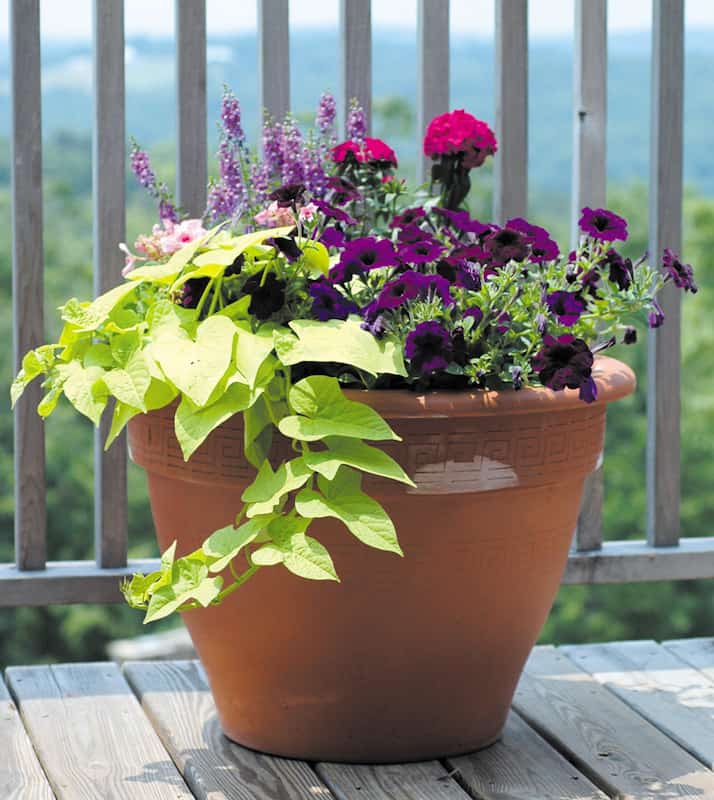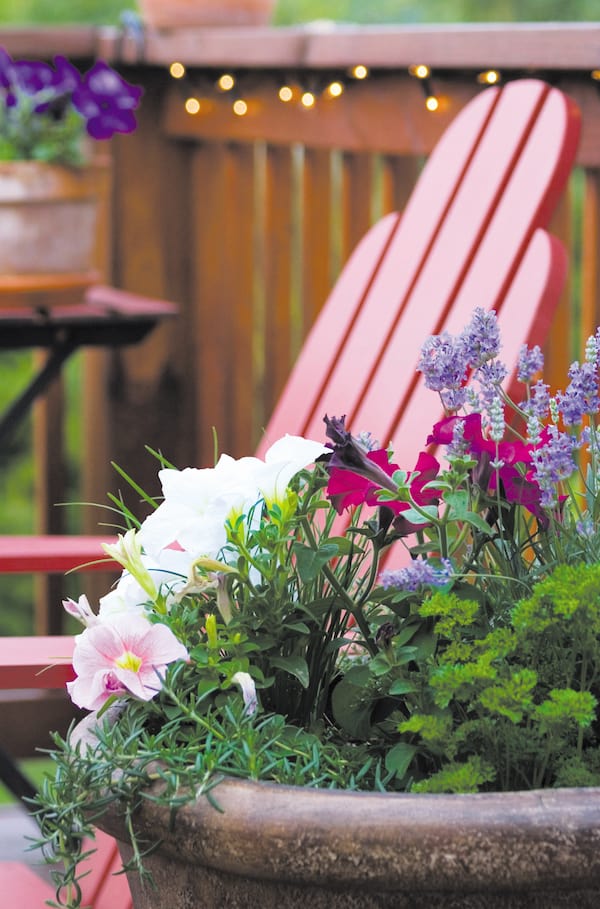Whether walking down a small-town street and seeing brilliant pink, white and purple petunias cascading from window boxes and hanging baskets or finding them spilling onto the garden path in the yard, many of us in the Southeast consider the showy petunia a summer favorite. There are few plants that can take the pounding heat of summer and still produce loads of color as well as the petunia.
In our garden, the native reseeding Petunia integrifolia provides a welcome splash of color that winds its way throughout the garden over the course of the whole summer. This petunia thrives in the heat and sun and doesn’t seem the least bit daunted by a drought or poor soil. Two-inch magenta flowers give off a lovely scent and welcome butterflies and hummingbirds. There is no need to collect the seeds off of these loyal friends; they will reseed themselves over and over again. They don’t seem impressed by bedding lines and other pesky limitations on their growing patterns; at the same time, they are so charming we can’t really call them invasive. As we write this, there is one blooming in the middle of the gravel where we park the car, seemingly oblivious to the traffic and difficult living conditions.

If you decide to save seeds from this type of perennial petunia, keep them in a cool, dry place over the winter and then distribute them directly onto the soil in the full sun after the last frost. Don’t plant them deep, but just barely mixed in with the topsoil. Like all petunias, the reseeding petunia likes good drainage. The plants grow 6-8 inches high and spread about 3 feet. We cut ours back periodically just to keep them under control.
Petunias are part of the nightshade family, along with potatoes and tomatoes. The hybrids we know today started with European – especially German, English and Japanese – horticulturalists, who were fascinated by their color and easy breeding traits. European and North American gardeners first discovered them in the mid-1700s. They became wildly popular in the gardens of Europe in the 19th century. Modern-day travelers abroad will be familiar with the magnificent hanging baskets in towns throughout Europe, their saturated colors streaming from light posts and balconies. Our common garden petunia, Petunia hybrida, is a cross of species native to Argentina.
In this country, Charles Weddle of the Atlee Burpee Seed Company was responsible for much of the cultivar work on petunias back in the 1930s. There are four basic types: mulitflora, grandiflora, spreading and floribunda. The spreading or “Wave” petunia has become particularly popular in the past decade and can be found at just about any nursery in early spring. Colors include deep purple, magenta, light pink and white. There are also mixed-color petunias available, including white with delicate stripes of magenta, pink and purple, to name a few.

Petunias do best in rich, light soil that is well-drained. They like a little compost or fertilizer every few months. If you want to include petunias in a hanging basket, avoid combining them with plants that need lots of watering as petunias do not like to get soggy. Plant spreading petunias 15-20 inches apart, others approximately 4 inches on center. All petunias root easily from cuttings, but planting from seed is also easy. Their rapid growth and showy results are good attributes that can encourage young gardeners as well.
Petunias also do well outside of containers. One environment for petunias that is often overlooked is the sunny bank. If you happen to have a bank in your yard that can be easily watered, try seeding it in early spring with drifts of colorful petunias. They will take care of themselves and bring joy all summer long.
There are three main things to avoid when gardening with petunias: shade, over-watering in soggy conditions and getting water on the blooms. Try to water plants from below with a wand or irrigation system as water on blossoms will cause them to close.
